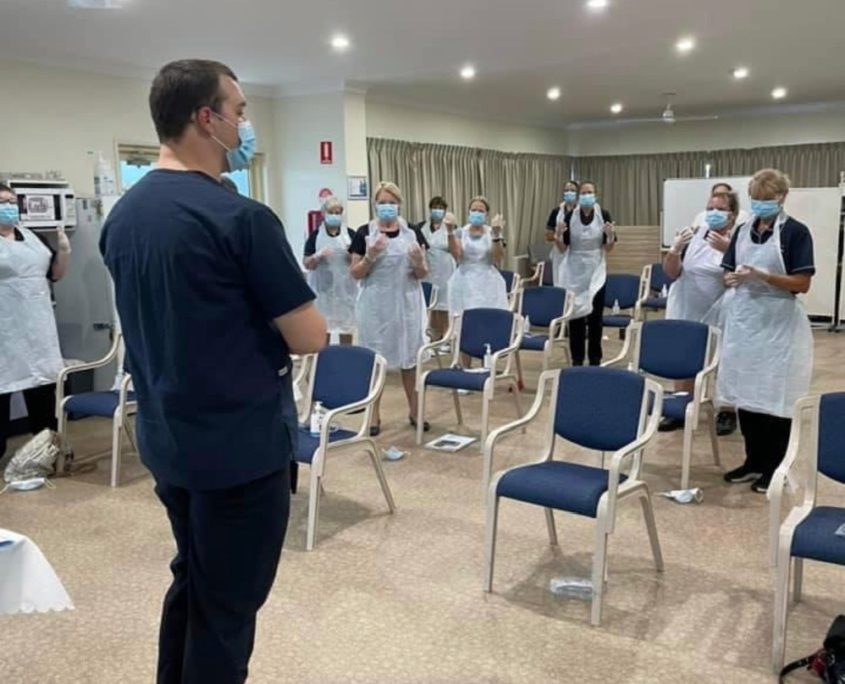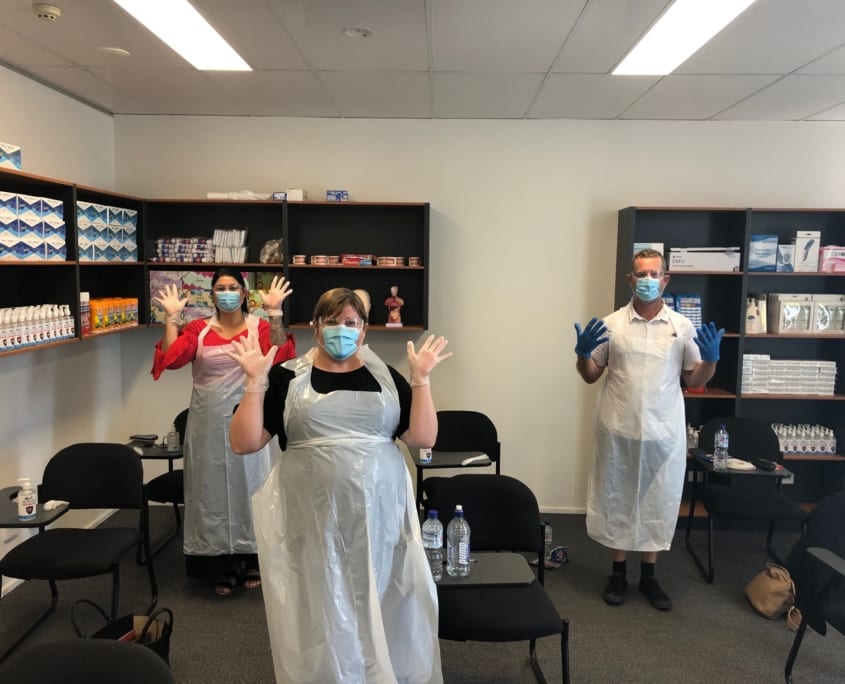IDC/SPC Insertion for Registered Staff EN/RN (QHA901)n
Catheter Insertion Program
Are you an enrolled or registered nurse, wanting to learn how to insert an indwelling or suprapubic catheter?
This program has been designed by clinical nurse educators to equip nurses with the skills to provide IDC and SPC insertion and changes according to a clients care plan.
Course Outcomes
IDC/SPC Insertion Training for Nursing Staff
Education content – Course outline for QHA901 Nurse Initiate IDC/SPC (Male and Female)
This program, created by clinical nurse educators at Queensland Health Academy, is designed to provide nurses with the skills needed to safely perform IDC/SPC insertions in line with the host facility’s policies and procedures.
“Such a fun workshop with the models, it felt like it was real. I liked the online theory too.”
Entry Requirements
You must hold general registration as an Enrolled Nurse or Registered Nurse with AHPRA
The course fee covers a hands-on workshop featuring anatomically accurate models for both male and female insertions and SPC replacement, as well as various catheter sizes, consumables, and competency assessments. Upon completion, competency assessment forms are signed by the Clinical Nurse Educator (CNE) and provided to the facility for record-keeping. Additionally, participants will receive a certificate of completion for IDC/SPC insertion.
This program is open for organisations or single enrolment students.
What makes this course different to other IDC/SPC insertion courses?
Our nurse educators not only write and deliver our programs but provide community nursing to our community. We practice what we preach. We are apart of the Fortify Health Group and Nurse clinic.
Substantial discounts are available for group bookings.
What you can expect to learn from the course?
- Refresh of anatomy and physiology for the urinary system
- Indications for insertion or change of catheter, both indwelling and suprapubic
- Follow current evidence based guidelines for insertion
- Recognise risks and complications
- When to escalate
- Have the insertion skill demonstrate
- Have the opportunity to practice the skill on our devices
Come to our state-of-the-art skills laboratory or we can come to your organisation
Course Delivery
Online theory followed by a clinical workshop where you demonstrate the skills on our equipment under the supervision of a clinical nurse educator.
Course Duration
Online theory: 1.5hrs
Workshop: 2hrs
Performance Task Demonstrations
- Safely insert an indwelling catheter into a male patient
- Safely insert an indwelling catheter into a female patient
- Safety insert (change) a suprapubic catheter
Award
On successful completion you will receive a Certification of Completion signed of my our Director of Clinical Education/CNC.
Why choose our program?:
- Enhances Patient Safety
Proper training in IDC (Indwelling Catheter) and SPC (Suprapubic Catheter) insertion reduces the risk of complications such as infections or trauma. Well-trained staff are more confident and competent, leading to safer patient outcomes.
- Improves Care Quality
When nursing staff are skilled in these procedures, they can provide higher-quality care. This training ensures they are knowledgeable about the latest techniques and protocols, directly benefiting residents’ health and comfort.
- Increases Staff Confidence and Competence
Comprehensive training empowers nurses to perform catheter insertions with confidence. This not only improves their skill set but also boosts morale, leading to greater job satisfaction and reduced turnover.
- Meets Regulatory Standards
Healthcare facilities are often required to meet specific training standards for staff. Providing IDC/SPC insertion training helps ensure compliance with regulatory bodies, such as NDIS and aged care.
- Enhances Team Efficiency
Well-trained staff can perform procedures more quickly and effectively, leading to better workflow in the facility. This efficiency can result in more time for nurses to spend with residents, improving overall care.
- Facilitates Better Communication
Training sessions create opportunities for staff to discuss best practices and share experiences. This collaborative environment fosters better communication among team members, enhancing overall teamwork in the facility.
- Promotes Continuous Professional Development
Offering this training underscores the facility’s commitment to ongoing education and professional growth. Nurses who feel supported in their development are more likely to stay with the organization long-term.
- Addresses Specific Needs of Aged Care Residents
Aged care residents often have unique medical needs. Training focused on IDC/SPC insertion equips nursing staff with the specialized knowledge required to address these needs effectively and compassionately.
- Supports Infection Control Practices
Proper training in catheter insertion techniques includes education on infection control measures. This knowledge is crucial for minimizing the risk of healthcare-associated infections in vulnerable populations.
- Boosts Facility Reputation
A commitment to staff training and high-quality care enhances the reputation of the aged care facility. This can attract more residents and their families, who prioritize quality care in their decision-making.




